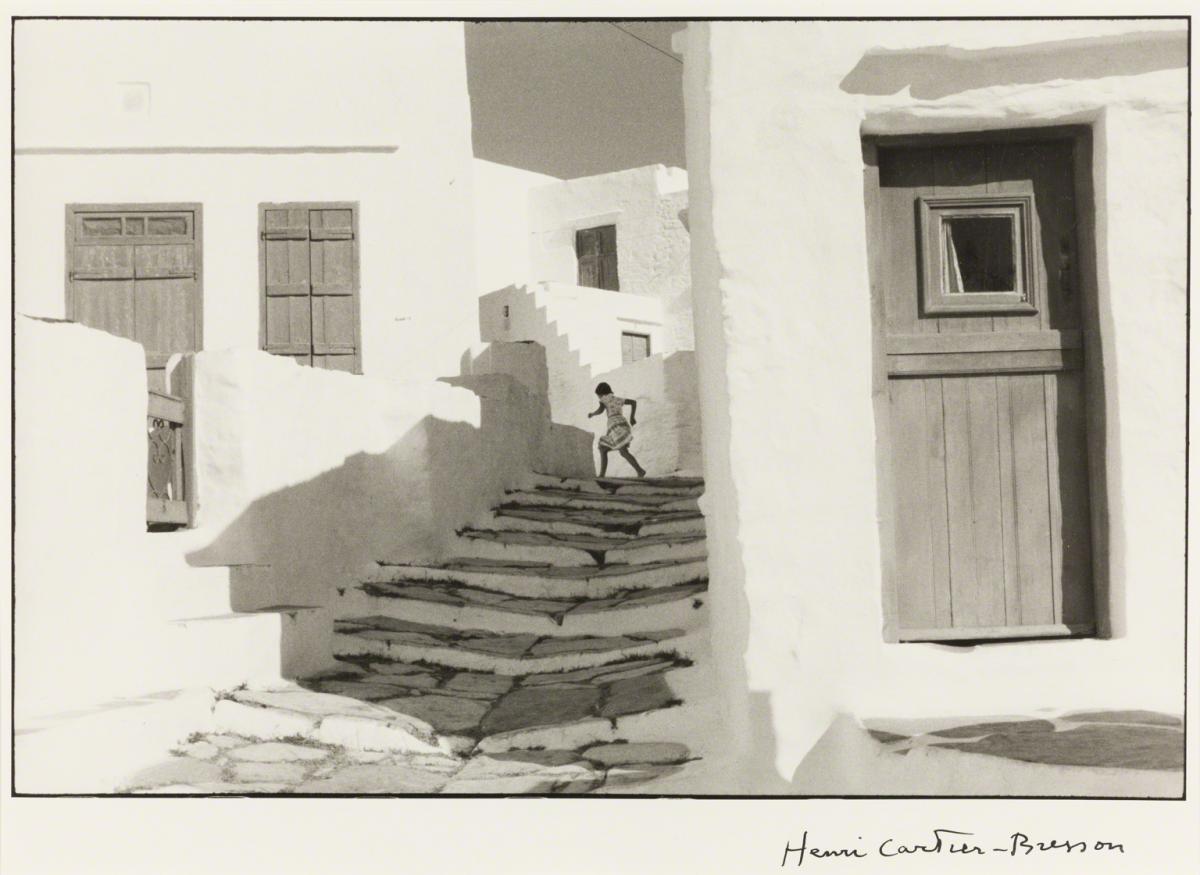Siphnos, Greece
Henri Cartier-Bresson ( 1961 )

Trained as a painter, Cartier-Bresson began his formal photography career in France in the early 1930s. He became one of the first photographers to shoot in the 35mm format with a Leica camera. His concept of the “decisive moment” defined as “the simultaneous recognition…ofthe significance of an event as well as a precise organization of forms which gives that event its proper expression” set a standard for photography that influenced generations. Using his tiny handheld camera, Cartier-Bresson developed a “street photography” style of discreetly entering a crowd to take pictures. His camera allowed for thirty-six negatives, each approximately 1 x 1 in. in size to be taken on a single loading of film. The small negative made it possible to take many exposures in rapid succession. Cartier-Bresson printed the entire negative, never cropping or editing the image. He prints display a rich range of middle grays with accents of black and white.
Cartier-Bresson used the metaphor of shooting to describe his work: “approach tenderly, gently on tiptoe- even if the subject is a still life.” While traveling in Italy in 1933, Cartier-Bresson stumbled upon a beautiful still life arrangement of fruits at a market stand. He artfully captured this moment in the photograph Tivoli, Italy. Intrigued by the architecture of his surroundings decades later while touring the Greek islands, Cartier-Bresson, happened upon a path covered in deep shadow and waited for the right figure to appear. He caught a local in mid-stride, running up the back stairs in Siphnos, Greece.
In the 1950s, Duncan and Marjorie Phillips met Cartier-Bresson during one of the artist’s visits to the museum. Upon Marjorie’s request, Cartier-Bresson took a portrait of the Phillips family. In 1964, the museum hosted the loan exhibition Photographs by Cartier-Bresson which presented works from the artist’s private collection. The Phillipses purchased five photographs from the exhibition, including several portraits of artists represented in the collection.